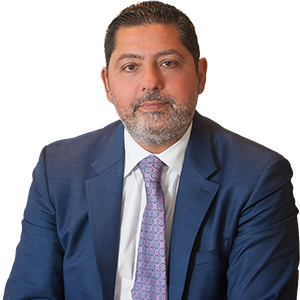Weight Loss Drugs vs. Bariatric Surgery – Which is Right For You?
If you’re trying to lose weight and finding it difficult, you may have considered taking medications or undergoing bariatric surgery. Both of these... read more
Call Us Today (732) 640-5316
E-Waiting RoomWith the ever-advancing technology, numerous bariatric revisional procedures are able to be performed using the endoscope. There are several advantages to this:
One potential issue after gastric bypass is a gastro-gastric fistula. This is an abnormal connection between the old stomach remnant and the new stomach pouch. A larger amount of food can be eaten without restriction due to this surgical defect because it will allow ingested food to be passed from the new stomach pouch to the old stomach. A combination of tests including upper endoscopy, upper GI series, barium swallow, abdominal ultrasound or CT scan can assist a diagnosis of a gastro-gastric fistula.
Another potential issue after a gastric bypass is weight re-gain due to a dilated gastrojejunostomy anastomosis (the connection between the stomach pouch and small intestine). Over time this connection can stretch, decreasing the sense of restriction and allowing patients to eat more. It is typically diagnosed with an upper endoscopy to visualize the anastomosis.
Both of the above issues are just some of the things that are able to be fixed endoscopically. There are numerous other applications of this technology within the field of bariatrics. For these procedures in general, the patient will be administered general anesthesia. The endoscope, which is a thin, flexible tube, is then inserted through the mouth and into the stomach to search out the defect. Using a combination of sutures, mesh, fibrin glue, clips, and other equipment, the tissue is prepared and repaired endoscopically. Therefore, there is virtually no pain, no external cuts, and minimal to no blood loss.
**The information on this website is not an alternative to medical advice from your regular physician. Our health advice is not intended as medical diagnosis or treatment; consult your regular physician before beginning the bariatric process. This site is for educational purposes only, and does not replace the need for a formal consultation with a surgeon before undergoing a surgical procedure or receiving treatment. The content/images on this website are not a guarantee of individual results. Individual results may vary.

Dr. Ragui Sadek is a premier surgeon who established a state-of-the-art and one of the safest bariatric surgery programs in the state. Dr. Sadek has fellowship training in both laparoscopic/bariatric surgery and surgical trauma/critical care, allowing him to safely perform complex surgeries on patients who have been turned down by other practices. As a Clinical Assistant Professor of surgery at RWJ Medical School & the Director of bariatric surgery program at RWJ University Hospital, Dr. Sadek offers a cutting-edge range of laparoscopic, robotic, & bariatric surgical procedures with a complication rate substantially below the national average.
Dr. Sadek is a Clinical Assistant Professor of Surgery at Rutgers-Robert Wood Johnson Medical School and a Fellow of the American College of Surgeons. Having performed more than three thousand advanced surgical procedures, Dr. Sadek has established a strong patient satisfaction rate and a solid reputation among the surgical community and is renowned as a top physician in his field by International Association of Healthcare Professionals. As a board-certified surgeon, he holds affiliations with the American Society of Metabolic and Bariatric Surgery and the Society of American Gastro Endoscopic Surgeons. More about Dr. Sadek
Stay current with Advanced Surgical & Bariatrics of New Jersey

If you’re trying to lose weight and finding it difficult, you may have considered taking medications or undergoing bariatric surgery. Both of these... read more

Are you frustrated with your inability to lose weight? Tired of being trapped in an endless cycle of yo-yo dieting, over-exercising, cleanses, and... read more